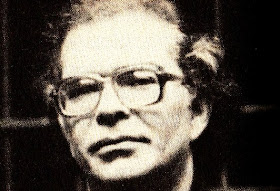to a chaotic rubble.
I first heard of Childmare through a reader who remembered one of those tasteless scenes but not the title of the book, and another, sharp-eyed reader was able to identify this book as the culprit. Later I found a copy - pretty sure it was Artifacts in Hood River, OR - and immediately snatched it up. Glad I did! This is vintage horror fiction with a pretty bad-ass mean streak, with a classick cover by, most likely, the wonderful Don Brautigam.
We get right into things with some bullying in the Martin Balliol School, a comprehensive in London, a perfect example of the modern industrialized educational facility. Small, fat and unathletic Samuel Rose is pretty much getting the snot beat out of him by a gang of teenage thugs when, at the last moment, the school's American head of security, a 38-year-old New Yorker named Max Donnelly, arrives to bark orders and assert authority. Of course Rose refuses to rat out his attackers, knowing that to do so would simply result in more, and worse, abuse. After a disgusted Donnelly dismisses him, Rose sneaks into the cafeteria storeroom, gorges himself on pilfered food - as most emotions did, fear had left him ravenously hungry - and hides out till the schoolday's end. That night, after lying to his parents about his torn clothes and various bruisings, he pummels them both to death with a cricket bat.
And so on from there. Soon all - almost all - of the 1,500 schoolchildren have rolled their pupils up into their eye sockets (an image sorely lacking on both US and UK paperback covers) and begun systematically attacking, in the most gruesome manners possible, teachers and other staff members. Think Dawn of the Dead-style mayhem and striking set-ups just not with bloody tattered zombies, but hordes of uniformed teenagers. There's mass destruction as special forces are called in with their guns and helicopters and tactics, all to no avail.
The children soon take to the streets of London, leaving mutilation and death in their wake. Donnelly, accompanied by sly, slovenly cop Tarrant and female interest and English teacher Tracy - herself nearly raped to death by her students in one particularly unsettling scene - narrowly escape the school and commandeer an ambulance and race through the familiar streets and boroughs of London, trying to deliver to authorities a folder of medical notes that could solve the entire unbelievable catastrophe, aghast at what the children have wrought. All too close for comfort for our protagonist:
Childmare is, as was once said about other matters, nasty, brutish and short. The pace never slackens in its 200 pages; the writing is powerful, direct, taut. The author allows readers to see the horror from all angles: from the grimly-determined heroes to the hapless victims, from one young student not affected but swept up into the madness and fearful of being found out, to the actual perpetrators, victims themselves of a raging unquenchable thirst for violence: It was as if his cranium no longer contained a brain but, instead, an imploded star that raged with heat and light and pulsed fierce, agonizing energy through his body. Yikes. More and more of England's cities are plagued by the same nightmare, and in a few hours half a million kids are running to the town centers...
At times Childmare seems a dire, almost callous affair as the main characters must fend for themselves and leave others to the homicidal hands of the teens. Everything comes to an appropriately fiery end, but not before several pages of somewhat tiring jargon as to the origins of this ordeal - you really want to get back to the good stuff! Then there are the usual sentiments against uncaring royals and politicians, big business greed, scientific endeavor and progress: all deemed guilty of causing the tragedy. The children, it's true, are innocent, but they pay the final price.
Oh yeah: author A.G. Scott is the pseudonym of a writer named Nick Sharman, the name Childmare is copyrighted under. In the '80s a handful of genre novels were published by Signet in the US under this name, but the only other info I could find about a Nick Sharman was the fictional detective. After some internet sleuthing - and where I ended up is where I should have started, at the Vault of Evil - I discovered that "Nick Sharman" is the pseudonym of one Scott Gronmark. However I don't know why the American paperback was published as written by A.G. Scott - I suppose it's a closer pseudonym to the author's real name. Such are the interests and pursuits of a horror bibliophile.











































